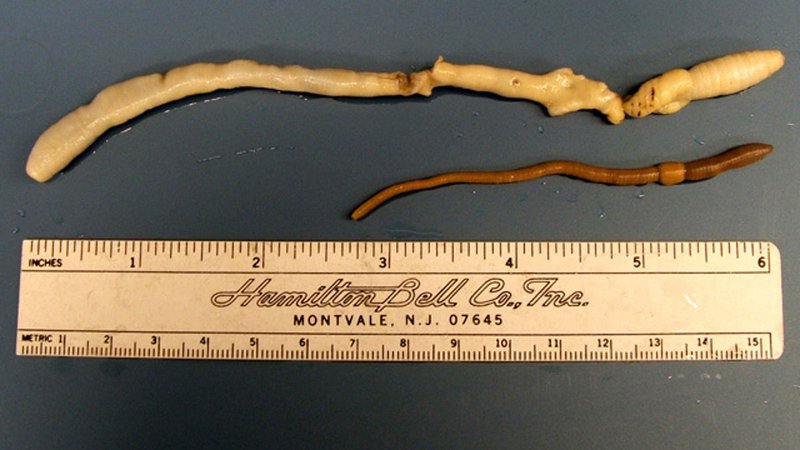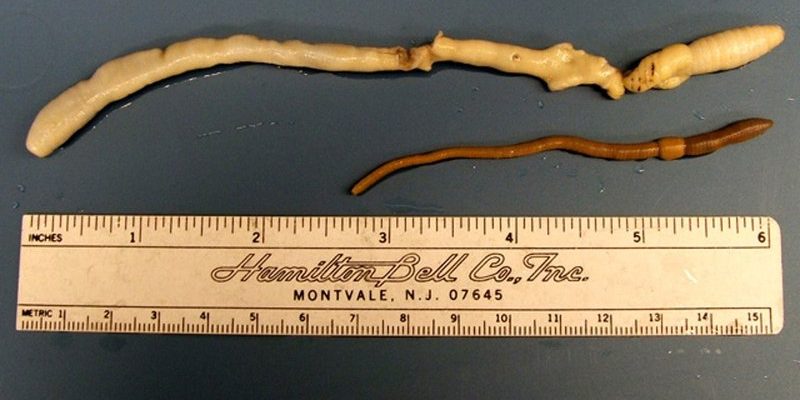
Now, why should we care about these worms? Well, they serve as bioindicators, which means their presence or absence can signal the health of the soil and even the overall landscape. Plus, tracking their activity across the seasons can give us insights into changing environmental conditions. Honestly, it’s a bit like watching the seasons change with an eye on those little critters that are mostly hidden from view. Let’s dig into what we know about these unique worms and why keeping tabs on them is so important.
What is the Giant Palouse Earthworm?
The Giant Palouse Earthworm (Lumbricus terrestris) is one of the largest species of earthworms, reaching lengths of up to three feet in some cases. Yes, you read that right—three feet! They have a distinctive creamy-white color, which makes them stand out from the typical brown worms you might find in your garden. These worms live deep in the soil and create burrows that help aerate it, allowing water and nutrients to penetrate more easily.
You might be wondering how these worms manage to thrive in their specific habitat. They prefer the rich, loamy soil of the Palouse region, an area known for its rolling hills and fertile farmland. This environment provides the perfect conditions for the worms to live, breed, and carry out their crucial work. The rich soil supports the microorganisms that help break down organic materials, making it easier for the worms to feed.
However, the Giant Palouse Earthworm is facing challenges due to habitat loss and agricultural practices. Monitoring their activity can help researchers understand how these factors impact their populations, which is vital for the health of the entire ecosystem.
Why Monitor Earthworm Activity?
You might be thinking, “Why should I care about monitoring earthworm activity?” Well, here’s the thing: earthworms are essential for soil health. They help to improve soil structure, enhance nutrient availability, and promote plant growth. If we’re tracking their activity, we’re really keeping an eye on the health of our environment.
By monitoring the Giant Palouse Earthworm, scientists can gather data on soil quality and ecological health. For instance, if these worms are less active or declining in numbers, it might indicate problems like soil degradation or pesticide overuse. Essentially, they’re like nature’s little canaries in a coal mine, signaling changes before we even notice them.
Moreover, understanding their seasonal patterns can reveal how climate change is affecting local ecosystems. Changes in temperature and moisture levels can alter worm behavior and habitat. So, keeping an eye on these earthworms can help us better understand the impacts of global warming.
Seasonal Changes in Earthworm Activity
The Giant Palouse Earthworm shows distinct patterns of activity depending on the season. As the year rolls on, temperatures change, and so does the lifestyle of these worms.
Spring marks the beginning of their active season. As the soil warms and moisture increases, these worms start to come closer to the surface. This is when you might spot them after a heavy rain, wriggling their way to the top. They’re busy feeding and mating, so it’s a crucial time for their population.
Summer can be tricky for them. With warmer temperatures and drier soil, their activity may decrease. The worms tend to burrow deeper into the ground to escape the heat and maintain moisture. This is a time when they might be less visible, but that doesn’t mean they’re not hard at work underground.
Fall brings cooler temperatures, and the worms become more active again. As the soil begins to cool, they regather at the surface, preparing for winter. This is a crucial time for them to feed and gather energy for the colder months ahead.
Finally, Winter is a period of dormancy for the Giant Palouse Earthworm. During this time, they remain buried deep within the soil, conserving energy and avoiding the cold. The interesting part? They don’t hibernate in the traditional sense; rather, they enter a sort of metabolic slowdown.
How to Monitor Giant Palouse Earthworm Activity
So, if you’re interested in monitoring these fascinating creatures, how do you go about it? Here are a few methods researchers typically use, which you might find useful if you’re looking into soil health or even just curious about the local ecosystem.
1. Soil Sampling: This involves collecting soil samples from different locations at various depths. By analyzing these samples, researchers can determine the presence and density of earthworms.
2. Pitfall Traps: Another method is to set up traps designed to capture worms as they come to the surface. These traps can provide valuable data on their activity levels and population density.
3. Visual Inspections: Simply observing the soil surface, especially after rain, can reveal worm activity. If you see many worms wriggling about, that’s a good sign!
4. Record Keeping: Keeping a log of when and where you find earthworms can help establish patterns over time. This can become particularly useful in drawing connections between environmental changes and worm populations.
Challenges in Monitoring
While monitoring the Giant Palouse Earthworm can provide essential insights, it’s not without challenges. First off, these worms live deep underground, making them hard to study. Their burrows can go several feet down, making surface sampling less effective.
Additionally, factors like soil compaction and agricultural activity can disrupt their natural habitat. When soil becomes too compacted, it reduces the available space for these worms to live and thrive. This brings us back to the importance of monitoring; we need to keep track of how these external factors influence their populations.
Another challenge is climate change. Fluctuations in temperature and precipitation can have significant effects on the worms’ life cycles. More extreme weather patterns may disrupt their seasonal behaviors, making it harder to predict their activity.
Moreover, the Giant Palouse Earthworm is considered endangered. So, any monitoring efforts need to be conducted carefully and ethically to avoid further harming the populations.
The Importance of Awareness and Conservation
Ultimately, bringing awareness to the plight of the Giant Palouse Earthworm is crucial. These creatures are much more than just soil-dwellers; they’re integral to a healthy ecosystem. By monitoring their activity, we gather important data that can inform conservation efforts.
If you find yourself inspired by this unique earthworm, consider supporting local environmental organizations or participating in community science projects aimed at monitoring their population. Every bit of effort helps.
You might also encourage others to learn about the Giant Palouse Earthworm! Sharing information is a powerful way to promote conservation. After all, the more people understand why these worms are important, the more support there will be for protecting their habitat.
In conclusion, monitoring Giant Palouse Earthworm activity across the seasons is not just an academic exercise; it’s a vital part of understanding and preserving our environment. By tracking their behavior and population changes, we can keep a pulse on soil health and ecological well-being. So, let’s dig deeper, keep our eyes peeled on these fascinating creatures, and work together to ensure they thrive for generations to come.

